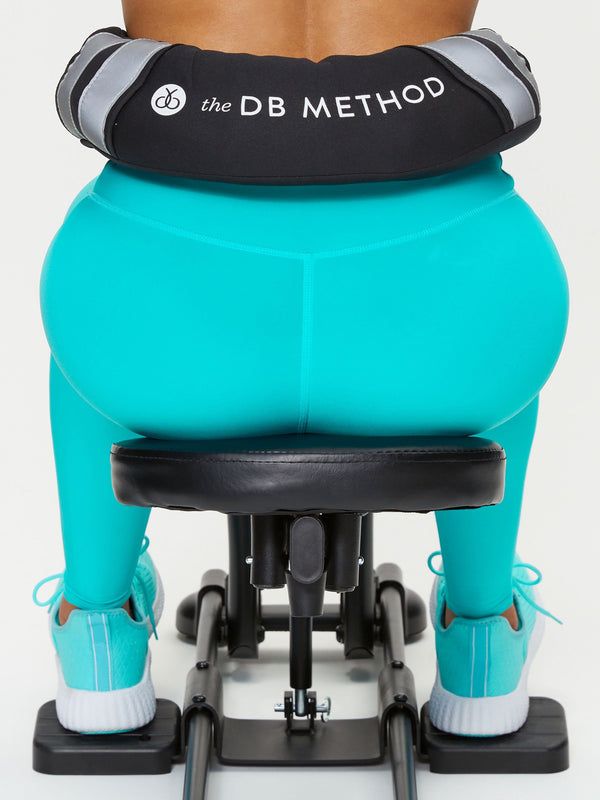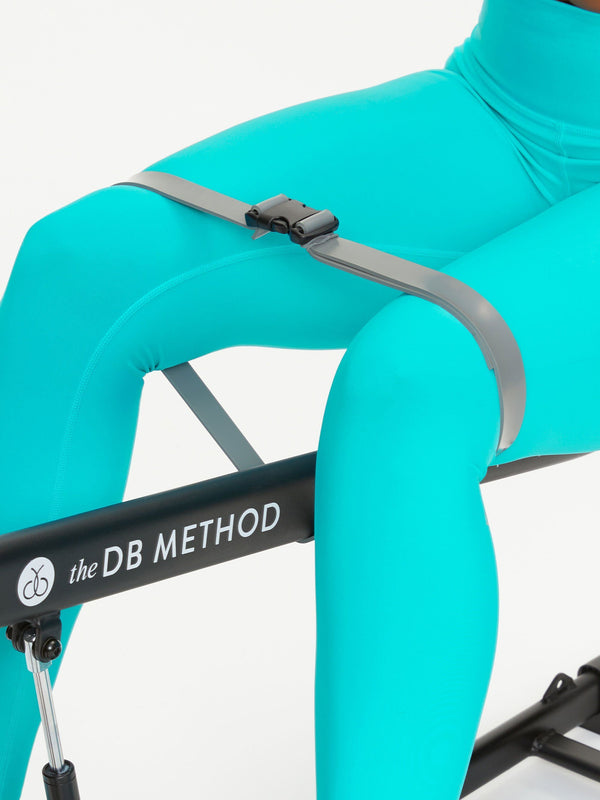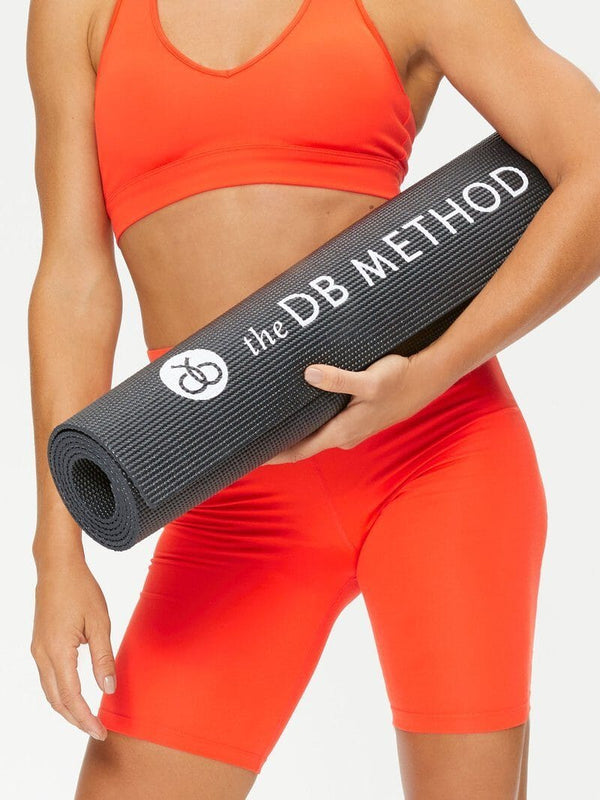If you stand up and feel pain or numbness in your glutes, then chances are you may have dead butt syndrome. Also known as gluteal amnesia or gluteus medius tendinosis, dead butt syndrome develops when you spend hours sitting in school, work, or your car, and your glutes weaken. Why is sitting so bad for you?
The muscles in your rear work to keep you moving and upright. And lifestyle factors like obesity, prolonged sitting, and even excessive running can "turn off" these muscles which can lead to pain. But don’t worry, your dead butt is easy to resuscitate. We get into this after we go through the symptoms and how to test for dead butt syndrome.
The symptoms of dead butt syndrome include:
- Numb glute muscles
- Tight hip flexors
- Hip tenderness
- Pain in your knees and feet
- Discomfort in your lower back
- Limping while walking
- Loss of strength in your lower body
If you suffer from dead butt syndrome, you may also have pain holding certain positions and during activities like:
- Prolonged sitting with your legs crossed at the knees and one foot dangling
- Sitting with knees together but feet apart on the floor
- Standing with your hip jutting to the side
- Standing with your ankle crossed in front of the other
- Lying on your side and your knees are bent
- Walking
- Weight-bearing activities such as walking, climbing stairs, running, and standing
- Doing certain exercises (like step-ups)
Although dead butt syndrome can affect everyone, a sedentary lifestyle often is the most probable cause of dead butt syndrome. With that said, women are two to four times more likely to have this condition as well as adults over 40.
Sedentary lifestyles aren't the only causes of dead butt syndrome. Overusing the muscles can also turn them off. That's why athletes that do the following may be more prone to dead butt syndrome:
- Runners
- Bikers (bicycles)
- High impact sports players (like soccer and basketball)
- Players of sports that require side-to-side movements (like pickleball and tennis)
Now for some good news. It is easy to test for dead butt syndrome. If you want to know if your "butt is dead", stand in front of a mirror and lift one of your legs! If your hip on the same side as your lifted foot dips, then your glutes on the opposite side are weak.
Now, how do you keep your rear alive? Even if your glutes are DOA, their demise is not forever.
How to Reduce and Reverse Dead Butt Syndrome
Modifying your daily routine and making some lifestyle changes can help you combat your booty from needing a burial.
- Stand up more often.
- Every hour stand or walk around for 10-15 minutes.
- On long drives, pull over often and stretch your legs.
- Modify your desk with a standing option so you can work while sitting or standing.
- Treadmill desks are great too.
- Use proper posture when sitting by keeping your elbows bent at a 90-degree angle, your hips at a 90-degree angle, and your knees at a 90-degree angle.
- Squeeze your glutes and stretch your hamstrings whenever you are seated for long periods of time.
- Take exercise breaks.
And the exercises you do matter. The movements should be glute focused so you're engaging the correct muscle group to keep them active and feeling "alive."
Exercises to Prevent Dead Butt Syndrome
Glute strengthening exercises help to prevent dead butt syndrome because they activate, strengthen and work the muscle groups that go “dead.” Here are eight of our favorites.
Side-Lying Leg Lifts
Side-lying leg lifts use your hip flexor muscles as well as your ab and lower back muscles which builds strength in your hip abductor muscles as well as your glutes. This makes them a perfect way to engage your booty when it is zombified.
- Lie down on your right side with your right arm extended on the floor and your left hand in front of your body for support.
- Turn your left leg so your big toe points toward the ground.
- Lift your leg up and back diagonally.
- Return to the starting position.
Squats
Squats are a great lower body exercise that targets your quads, glutes, hamstrings, calves, and core. This targets your gluteal muscles to varying degrees which helps you to stabilize your pelvis (which is what gets weakened with dead butt syndrome).
- Stand with your feet shoulder-width apart.
- With your core muscles tightened, slowly bend your knees so that your thighs are almost parallel to the ground.
- Slowly return to your starting position.
Pro-tip: For added resistance, use a barbell across your shoulders. If you struggle holding form or want to control the intensity, use a squat machine.
Romanian Deadlifts
Romanian deadlifts strengthen your glutes as well as hamstrings and adductors. This helps boost your mobility and range of motion in your hips, hamstrings, and lower back that you lose from dead butt syndrome.
- Start with your feet hip width apart and your knees slightly bent. You should have a pair of weights in front of your thighs with your palms facing your body.
- Bend at your hips and lower the weights toward the floor. Stop when your body is parallel with the floor.
- Return to the starting position by pressing through your heels, squeezing your glutes, and pushing your hips forward.
Marching Glute Bridges
Marching glute bridges strengthens your abs, glutes, and hamstrings as well as release stress from your hip muscles. Not only do these improve your strength, but they also help stabilize your hips and pelvis which will help you prevent pain.
- Lie flat on your back with your arms by your sides, knees bent, feet hip-width apart, and your heels a few inches from your butt.
- Press through your heels to raise your hips up toward the ceiling.
- Keep your left foot on the floor and lift your right foot up while maintaining a 90-degree bend at your knee.
- Lower your right leg down and repeat on the left side.
Sumo Squats
Sumo squats are great for targeting your glutes as the wider stance keeps your hips rotated making you use your glutes even more than regular squats. This glute activation helps you avoid dead butt syndrome.
- Stand with your feet wider than shoulder distance apart and your toes turned out slightly while holding a dumbbell or kettlebell with both hands.
- Bend your knees and push your hips back to lower down into a squat.
- Return to your starting position by pressing through your heels and squeezing your glute.
Butt Squeezes
This exercise targets your lower back muscles, hips, and glutes. But squeezes help to get rid of numbness in your rear region.
- Stand with your feet shoulder width apart.
- Squeeze your butt muscles.
- Hold for 3-5 seconds.
Clams
Clams strengthen your glutes which brings more power and stability to your hips. The lack of stability may make you more prone to injuries and is a common side effect of dead butt syndrome.
- Lie down on your left side with your left forearm resting on the floor.
- Bend both of your knees in front of you.
- With your feet together, keep your left leg on the floor while lifting your right leg into the air (which opens your hips).
- Return to the starting position.
Pro-tip: Add a resistance band around your thighs for extra glute activation.
Donkey kicks
Donkey kicks strengthen, tighten, and tone your glutes while opening up your hips and improving your posture. While doing a donkey kick you open your hip in the opposite direction that you hold it when you sit which counteracts the hours you spend in a chair.
- Start on all fours with your knees beneath your hips and your hands beneath your shoulders.
- While keeping your knee bent and foot flexed, lift your right leg up in a continuous motion until your thigh is parallel with the floor.
- Lower your leg back down and return to the starting position.
You can bring your “dead butt” back to life by incorporating healthy habits into your daily routines, and adding exercises that help prevent dead butt syndrome into your workout routine at the gym, in your office, or at home. If you found this article helpful, subscribe to The DB Method newsletter below.








